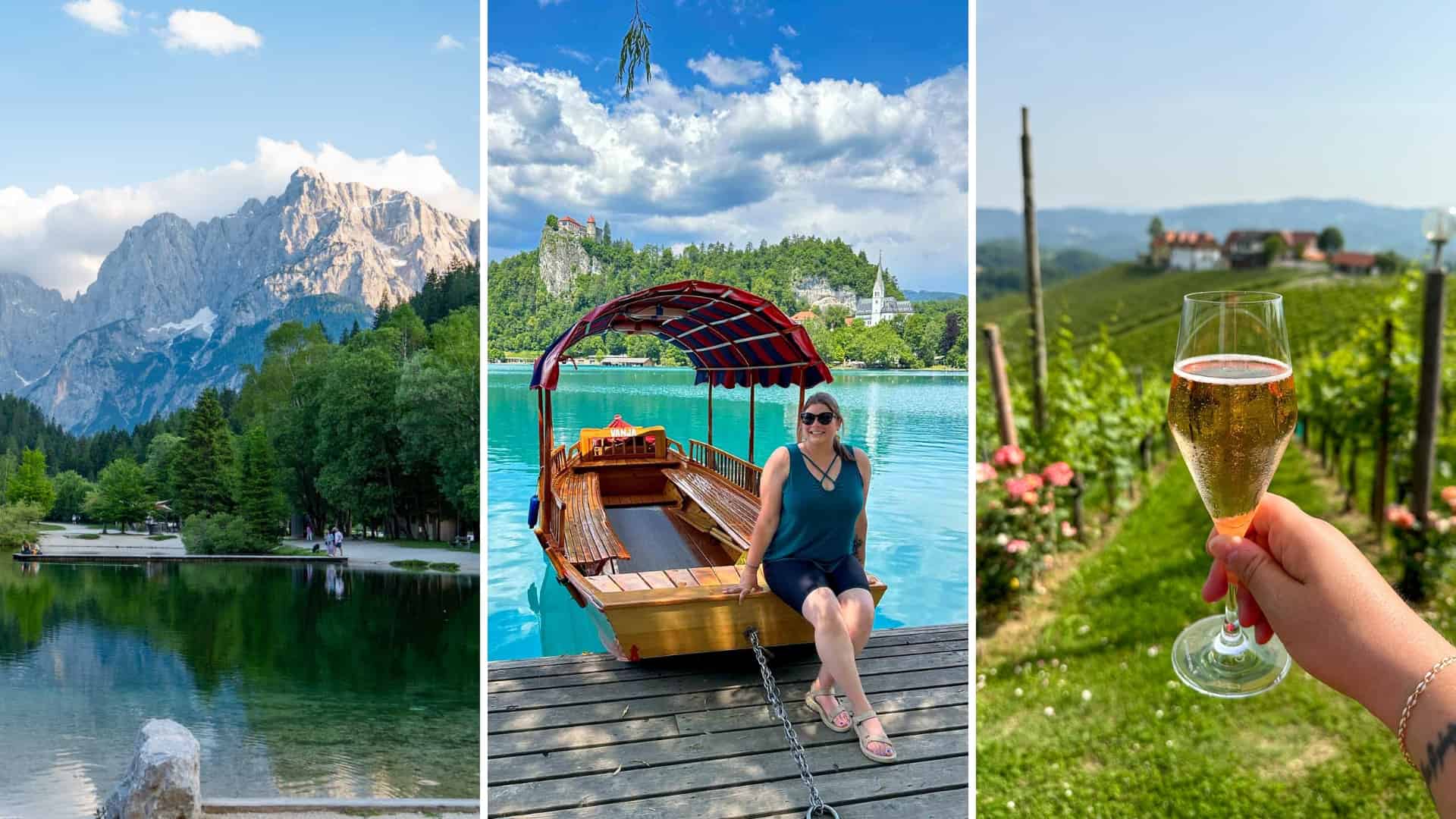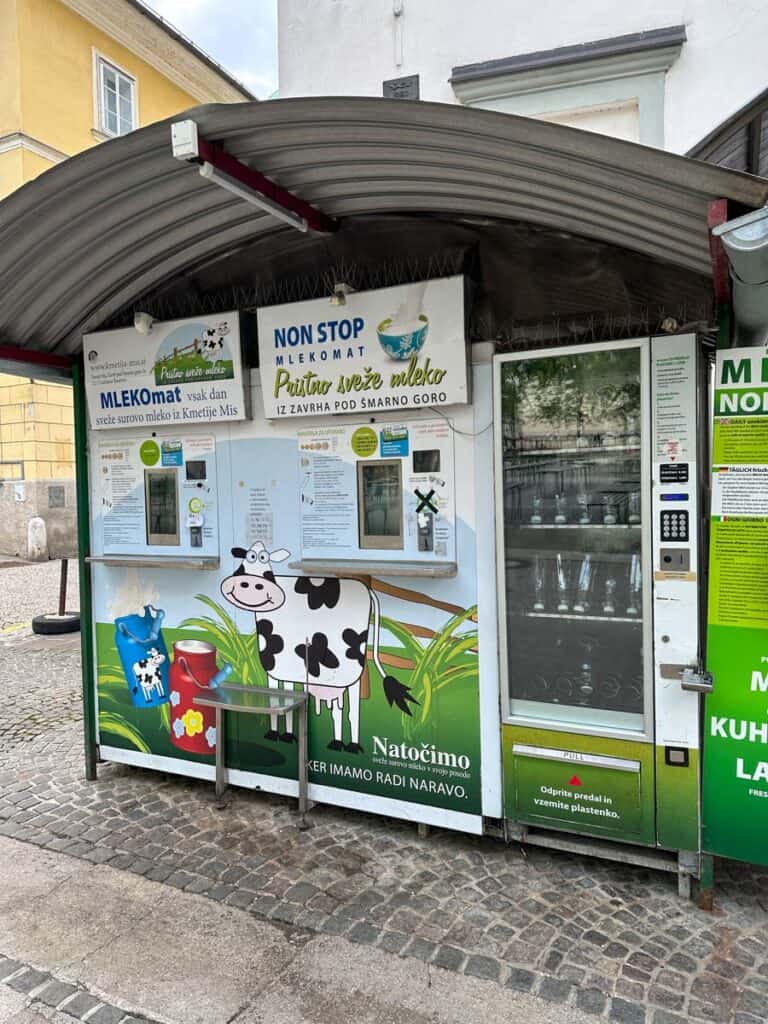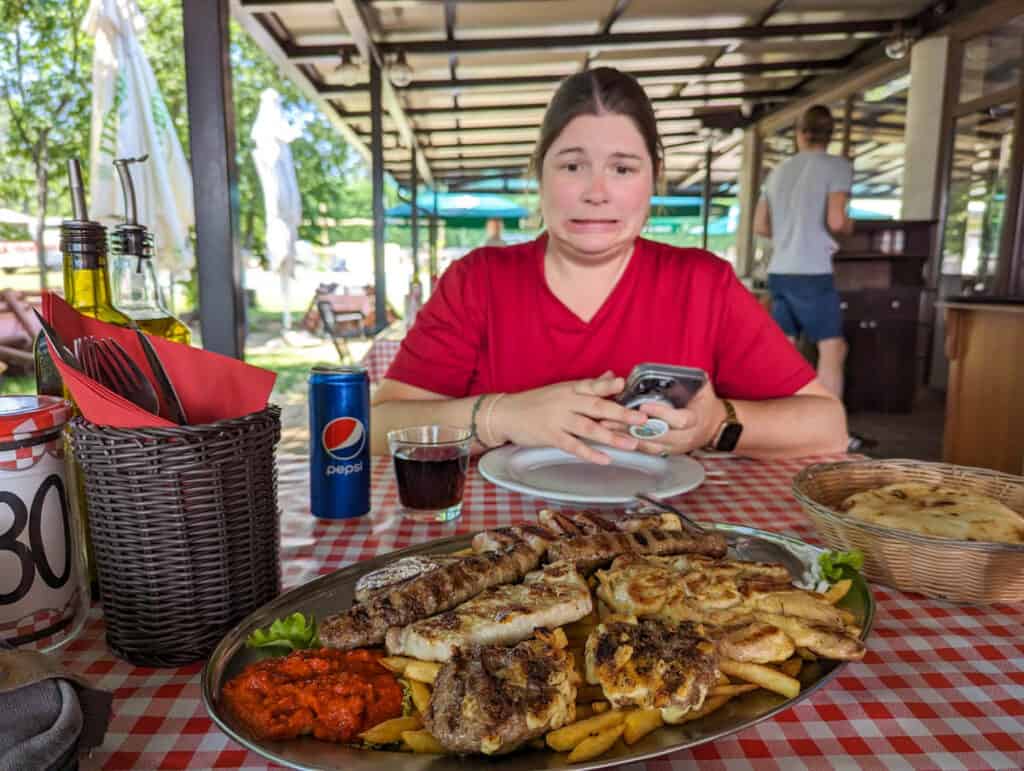17 Things You Need to Know Before a Trip to Slovenia

When people ask me about my favorite countries in the world, one of my answers always takes them by surprise: Slovenia. Yes, Slovenia is one of my favorite countries in the world!
This little former-Yugoslavian country nestled between Croatia and Austria packs a big punch. It's got incredible landscapes, delicious food and wine, warm and genuine people, and is blissfully overlooked by many tourists in Europe.


I first visited Slovenia in 2013, and absolutely fell in love with its colorful capital of Ljubljana, and its alpine gem of Lake Bled. When I was planning a return trip to Slovenia in 2023 with my friend Ashley, I was honestly worried that the country would have changed beyond recognition, as often happens with under-the-radar destinations.
But guess what? Slovenia felt pretty much exactly the same 10 years later! All of the things I loved about it on my first trip – the beautiful cities, untouched nature, and really nice people – were all still there. And I think you would probably love it, too.
Things to know before you go to Slovenia
If you're considering taking a trip to Slovenia anytime soon, here are some essential things I think you need to know first. Because, while Slovenia is a fairly easy country to travel in overall, it still definitely has its quirks.
1. Slovenia is not large

First, a quick geography lesson. Slovenia is located in southern Central Europe, and is considered a Balkan country. It's bordered by Croatia to the south, Hungary to the east, Austria to the north, and Italy to the west.
It's not a large country by any means; it covers just 7,827 square miles (20,271 sq km), and you can drive across the widest part of Slovenia in roughly 3.5 hours. (For comparison, Slovenia is about half the size of Switzerland, and slightly smaller than the US state of New Jersey.)
It's not very crowded, either, being home to about 2.1 million people.
2. Slovenia has diverse landscapes


For a relatively small country, Slovenia has some incredible diversity in what you can see and do! You can enjoy the (admittedly tiny but still there) coast in Piran, go hiking in the Julian Alps in Triglav National Park, explore cities like Ljubljana and Maribor, go underground in incredible karst caves, drool over alpine lakes like Lake Bled, and visit one of three different wine regions.
On my first visit to Slovenia, I was absolutely blown away by how incredible the scenery was. Much of Slovenia is hilly and mountainous, which I don't think most people realize!
3. Slovenia is a new(ish) country

Slovenia of course has been populated for centuries. It was part of the Holy Roman Empire for nearly 1,000 years, and then was under Habsburg rule as part of the Austro-Hungarian Empire until the end of WWI.
After WWI, Slovenia united with Serbia, Montenegro, and Croatia to form the Kingdom of the Serbs, Croats, and Slovenes in 1918. That kingdom lasted until 1929, when it formally changed its name to Yugoslavia (and eventually added Bosnia and Herzegovina, and Macedonia).
During WWII, the Axis powers invaded Yugoslavia in 1941, and divided up present-day Slovenia for occupation. Nazi Germany, Italy, and Hungary all controlled different parts of the Slovenian lands, and inspired one of the largest resistance movements of WWII. (Learn more about WWII history and sites you can visit in Slovenia here.)
After WWII (in 1946), Yugoslavia became a socialist federation, mostly under the rule of Josip Broz (AKA “Tito”) for decades. Slovenia was the first nation to secede from Yugoslavia, declaring its independence in 1991.
So, technically, Slovenia as a country has only existed since 1991!
4. Slovenia is a member of the EU

Despite its relative “youth,” Slovenia is a member of the European Union, having joined officially in 2004. This means that the currency used in Slovenia is the Euro.
5. You still need to carry cash
Unlike many other Euro-zone countries, you'll still want to carry some cash on you in Slovenia. You can use a credit card at hotels and most restaurants in larger cities, but outside of the cities cash is still preferred, especially for smaller purchases.
So definitely hit up an ATM when you arrive so you can be sure to have some cash on you.

6. You can get by fine with English
Slovene (or Slovenian) is the official language of Slovenia, and is a Slavic language. You'll also find Hungarian and Italian spoke as co-official languages, along with some Croatian, Serbian, and German.
But don't let this intimidate you; most Slovenians speak at least two languages, with English being the most common second language. So if you only speak English, you'll be just fine visiting Slovenia. People who work in tourism speak excellent English in my experience, and it's usually in rural areas near the border where English might not be someone's second language.
7. Slovenia is very green

Slovenia is a green country – both literally and figuratively.
Slovenia is 73% rural, with 61% of land covered by forests, according to the European Commission. Add in plenty of farmland and some protected national parks, and Slovenia is quite literally very, very green.
Slovenia is also “green” in the sense that it's quite a eco-conscious country. The entire country has been deemed a Green Destination of the World, and Ljubljana was named Europe's Green Capital in 2016 (a fact that Ljubljana's mayor is still very, very proud of).
Slovenia leans into its green and sustainable reputation, with a Green Scheme of Slovenian Tourism plan, plus solar panels and electric car charging stations everywhere.
8. Beekeeping is big here

The art of modern-day beekeeping was born right here in Slovenia – it’s even been designated an example of Intangible Cultural Heritage by UNESCO. And it is indeed ingrained in Slovenian culture; roughly 1 in every 200 people in Slovenia is a beekeeper, and you'll find colorfully-painted beehives and local honey for sale in nearly every town.
Bee tourism (AKA apitourism) is alive and well in Slovenia, and you can find all sorts of bee-related things to do, from honey massages (yes, it's a real thing!) to staying overnight in a beehive or bee-themed hotel. (Check out the best bee experiences in Slovenia here.)
Or, stay away from the bees and just enjoy all the local honey and honey-based treats and desserts as you travel around Slovenia.
9. Slovenia makes great wine

Don't feel too bad if you didn't know that Slovenia makes wine at all; Slovenian wine isn't often exported, and so much of the tourism emphasis here is put on places like Ljubljana and Lake Bled. But I'm here to let you know that Slovenia is home to three different wine regions, and makes some great wine!
Slovenia has actually been making wine for a very long time; it's home to the world's oldest grape vine in the city of Maribor, which is more than 400 years old and STILL produces grapes!

The three different wine regions in Slovenia are the Podravska Wine Region in the northeast, the Posavska Wine Region in the southeast, and the Primorska Wine Region in the southwest (the latter of which is very Italian-influenced).
Most of the wines produced in Slovenia are white, and a winery owner explained that most Slovenians prefer their wines sweet and fruity, so you'll find a lot of those here (because, remember, the vast majority of Slovenian wine produced is drunk by Slovenians!).
On my most recent trip to Slovenia, I traveled to Maribor specifically to visit some local vineyards. I spent a day in the Styrian wine region that straddles the Slovenia-Austria border (it’s the Štajerska region within Podravska in Slovenia, and called the Steiermark in Austria), and it was so worth it! Definitely an underrated wine destination in Europe.
10. Beware portion sizes

Slovenia isn't necessarily known for its huge portion sizes like some other countries (looking at you, USA), but we were consistently surprised (and sometimes hilariously appalled) by being delivered massive portion sizes of food.
Like the “meat platter for two” that should have actually been called the “meat platter for two families,” or the “small burgers” we ordered at a roadside restaurant that were bigger than our heads, or the seafood risotto at Lake Bled that was served in a cooking-sized pan.
It's not a bad idea to ask about portion size when you're ordering – though Slovenians like to downplay things, so you might just want to plan to share meals with a friend if you can, just to be safe!
11. Driving in Slovenia is easy (mostly)

The easiest way to explore Slovenia beyond Ljubljana is to drive yourself. There's not a great train system here, and public transit leaves a lot to be desired (mostly because Slovenia is just so rural).
The good news is that driving in Slovenia is pretty straightforward. There are a couple main highways that connect all the major cities, and roads in general are paved and well-maintained. They drive on the right here, and we didn't find Slovenian drivers to be overly aggressive or anything.
But there are some quirks to driving in Slovenia! A few things to know:
- Technically speaking, you need an International Driving Permit to drive in Slovenia along with your home driver's license if you're not Slovenian. (For my American readers, you can get one of these at any AAA location.) However, in practice no one ever asked us to see this in Slovenia. But it's probably still best to get one, just in case.
- Slovenia LOVES road signs; there are so many along all the major roads. Weirdly, though, some tourist attractions seemed to lack what seemed like essential signage.
- Double check the directions from your mapping app if you're going to slightly more remote parts of Slovenia. Waze led us astray more than once, sending us down unpaved farm tracks instead of roads. If a road is numbered, you're fine. If it's not numbered, you might want to double check that it's actually a road before you drive down it.
- If you're driving into Slovenia from another country, know that your car requires a vignette sticker or e-vignette in order to drive/pay on Slovenian toll roads. (If you rent a car IN Slovenia, however, your rental car should already have one.)

12. Slovenia is a popular cycling destination
One other thing to know about driving in Slovenia is that you might find yourself sharing the road with motorcycles and bicycle cyclists, especially up around Triglav National Park.
Slovenia in a popular destination for cycling, with some of the top cyclists in the world training here every year. And its gorgeous countryside and winding mountain roads are also fun to ride for motorcyclists.
So definitely just keep an eye out for bikes of all types, and give them plenty of space as you share the road.
13. Slovenia is an active destination

Beyond the capital city of Ljubljana, the main things to do in Slovenia are mostly outdoors – hiking, cycling, visiting caves, paddling on lakes, seeing waterfalls, etc.
And while the tourism infrastructure in Slovenia is generally very good, a lot of the most popular things to do and see include some amount of walking and climbing stairs. And, in my experience, local people (and internet reviewers) severely underplay just how much of each you might need to do in order to visit a place.
Ljubljana and Lake Bled have accessible hotels, restaurants, etc. But Slovenia as a whole really does require decent mobility in order to fully see.
14. Sometimes there's no info online

One of the major challenges to planning a Slovenia trip that goes beyond the main highlights (and sometimes even including them) is the lack of info available online.
Sure, you can find hotels to book and get directions. But if you want to find information on when a small winery is open, or how to book a stay in a beehive cabin? Good luck! Slovenia – and especially rural Slovenia – is still lagging a bit behind when it comes to getting information up on the internet. Even some major attractions have confusing websites that seem to be missing important info.
In some cases, you'll just have to wing it, or show up to places and see what happens! (Or read blogs like this one, where I share everything I learned with you!)
15. People in Slovenia are friendly and genuine

Slovenians are, in my experience, lovely people. They can be directly honest sometimes, but they have a great sense of humor and are generally open and friendly to visitors. Ashley and I had so many lovely interactions with lovely humans in Slovenia, some of which we're still talking and laughing about to this day.
People won't necessarily smile at you for no reason on the street in Slovenia (this isn't the American Midwest, after all!), but if you ask for help or have a question, the immediate response from a local is likely to be “Of course!”
16. Slovenia is still under the radar

Despite it being well-positioned in Europe and very easy to travel around, Slovenia still remains somewhat under-the-radar as a tourist destination.
Will that eventually change? Perhaps. But the country's mostly-rural makeup coupled with its commitment to sustainability makes me think (or hope, at least) that it might never become completely overwhelmed with tourists – which is great news!
I expected Slovenia to have changed a lot in 10 years, but it honestly felt almost the same in 2023 as it had in 2013. Yes, some of the most popular spots in Slovenia do get busy during the summer months, but for the most part this is still a place you can visit without dealing with long lines and massive crowds.
17. Slovenia is relatively affordable

The Balkan countries are generally regarded as a more affordable part of Europe to travel in, but I would say that Slovenia is probably one of the more expensive Balkan countries to visit.
Can you visit Slovenia on a budget? Yes, of course. There are hostels and guesthouses, and you can grocery shop and focus mostly on free outdoor things to do. But if you're traveling with a more moderate budget, I would say that Slovenia compares to Italy and Croatia in terms of cost of travel. (It looks quite a bit like Switzerland in some areas, but thankfully it's much more affordable than Switzerland!)
Food is affordable, many outdoor things to do are free, and you can definitely find mid-range hotels in the $100-$150 a night range. My friend Ashley and I spent about $3200 between the two of us (not including flights) during a 10-day road trip where we didn't stress about our budget too much. We rented a car, booked nicer hotels, did several paid activities, and ate out 2-3 meals per day.
Hopefully this gives you a better idea of what traveling in Slovenia is really like. It's one of my favorite countries in the world, and I hope these Slovenia travel tips can help you with your own trip.
Is Slovenia a place you'd like to visit?

Amanda Williams is the award-winning blogger behind A Dangerous Business Travel Blog. She has traveled to more than 60 countries on 6 continents from her home base in Ohio, specializing in experiential and thoughtful travel through the US, Europe, and rest of the world. Amanda only shares tips based on her personal experiences and places she's actually traveled!










So helpful!! I am just getting started planning my 2025 visit here- this is great. Really helps me get a sense of the country. Now need to go see what else you’ve written about Slovenia, Croatia and Hungary 🙂
Lots more Slovenia content to be found on the site! (And some about Hungary, too.) Happy planning!
Thank you so much !
I’m going this summer. Can’t wait! Any suggestions for am itinerary? Thinking Ljubljana, Lake Bled and Piran for sure. Is there anywhere else we should stop in?
Thank you x
Love your blog!
I’m working on more Slovenia posts and itineraries now! Ljubljana and Lake Bled for sure. Triglav National Park is also incredible. And we also went to Piran and Maribor, plus one of the karst caves.
Great, thank you. Can’t wait to read them!